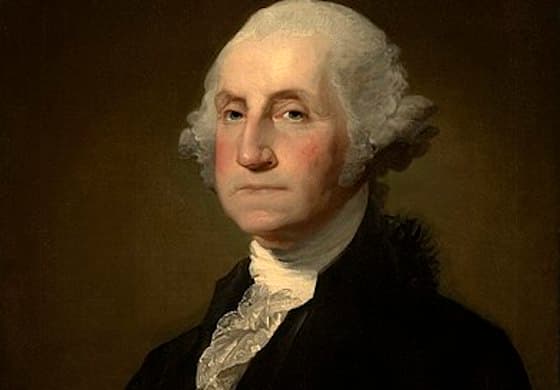George Washington’s Mother: Shrew or Saint?
Kate Haulman provides a fascinating account of how 19th century biographers came to enshrine Mary Ball Washington, and of the development of biography itself.

‘The Mother of Washington in Nineteenth-Century America’
By Kate Haulman
Oxford University Press, 264 Pages
In May 1894, Grover Cleveland spoke at the gravesite of Mary Ball Washington, quoting her son’s words, in effect, that the first president owed everything to her magnificent mothering.
President Cleveland’s speech, as Kate Haulman documents, came at the climax of a campaign to build a new memorial to an exemplary woman, a strict yet affectionate mother who for too long had not been properly acknowledged by her nation.
As Ms. Haulman shows, however, the words that the father of his country supposedly spoke in honor of his mother were a forgery, a fraud that had deceived even some eminent historians too keen to believe in an all hallowed Mary that Americans could revere.
Accompanying the factitious words attributed to Washington was a portrait of his mother, also a hoax, complete with a bogus provenance that again quoted Washington as saying he treasured this depiction of his beloved mother. That Washington never spoke in such sentimental language about virtually anyone — except for some bad romantic verse penned in his youth — seemed not to trouble biographers.
In truth, George Washington had little to say about his mother, and even less about his father, who died in George’s youth. The few Washington letters to Mary addressed her formally, with no expressions of endearment. Was this simply the propriety customary in the 18th century, or a sign of an estrangement between mother and son? The tone of at least one letter suggests exasperation with her, though it can’t be determined if what bothered him was a mother in old age or a parent he had never loved that much.
In the earliest biographies of Washington, Ms. Haulman explains, Mary was barely mentioned. Only gradually did she become, in later 19th century biography, anything like a significant influence on her son’s life. Most accounts of what she said and how she behaved remain problematic, many of them stemming from the fabulist Parson Weems.
The circumstances of a single mother, a slave owner running a plantation, rarely figured in accounts of her life — a fact that Ms. Haulman rectifies by repeatedly pointing out instances where Mary’s position and attitudes aligned her with a slave-owning class. She was shown in charge of, in some instances, pretty feckless slaves.
Ms. Haulman provides a fascinating account of how 19th century biographers came to enshrine Mary, and of the development of biography itself, in which the role of the mother in a great man’s life coincided with the activism of women — both those involved in radical causes like abolitionism and those steeped in the mythology of the Confederacy.
That tendency to treat Mary as a spartan mother and yet tender nurturer became subsumed in the post-Civil War desire to reconcile North and South. Part of that rapprochement coincided with efforts to refurbish and augment a neglected and decrepit memorial to her created in the 1830s, when a relative, George Washington Parke Custis, began his campaign to make Mary a central factor in George Washington’s rise to greatness. That memorial and the fitful and ambivalent efforts to restore it form a significant part of Ms. Haulman’s narrative.
Mary’s rather severe character as evidenced in the testimony of her contemporaries was sentimentalized by biographers portraying a woman who rejected any sort of pomp and circumstance, as befitting her son’s similarly austere persona.
In her Conclusion, Ms. Haulman deals with 20th century views of Mary, especially with those of Douglas Southall Freeman and James Thomas Flexner, who elaborated harsh views of Mary as something of a shrew. Ms Haulman spots misogyny in such treatments that she suggests are as skewed as the celebrations of Mary.
That it is Ms. Haulman’s aim to do more than provide a work of historiography that traces the most significant representations of Mary in biographies and in her memorial is evident in her last words: “In telling its story and that of the Mother of Washington figure across the nineteenth century, this book is an exploration of the power of gender, race, and ancestry in shaping what is remembered and forgotten about the founding past, by whom, and why. It is inspired by the hope that this history too—of public memory, commemoration, and the place of motherhood in them—is not forgotten.”
Mr. Rollyson’s forthcoming book is “Making the American Presidency: How Biographers Shape History.”

